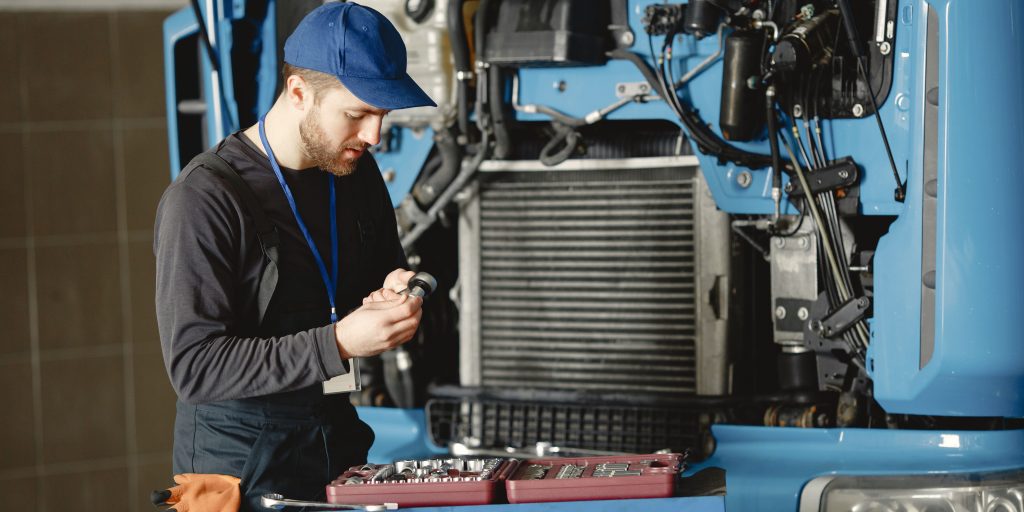

The Art Of De-fleeting
In the dynamic world of trucking, fleet management is a constant balancing act.
As a truck owner, one crucial aspect that demands attention is the decision to de-fleet—streamlining your fleet by retiring or selling trucks.
This strategic move requires careful consideration, but when executed wisely, it can lead to numerous advantages, optimizing your resources and positioning your business for future success.
1. Understanding Defleeting
De-fleeting is the process of strategically reducing the size of your truck fleet.
It involves retiring or selling vehicles that may be underutilized, outdated, or no longer aligned with the evolving needs of your business.
This strategic move aims to enhance operational efficiency, reduce costs, and align the fleet with current market demands.

2. Assessing Fleet Performance
Before diving into de-fleeting, conduct a thorough assessment of your fleet’s performance.
Analyze each vehicle’s utilization rate, maintenance costs, fuel efficiency, and overall contribution to the bottom line.
Identify trucks that are consistently underperforming or becoming cost burdens.
3. Embracing Technological Advancements
Evaluate your fleet’s technological landscape.
Older vehicles may lack the latest fuel-efficient engines, telematics systems, or safety features.
Consider de-fleeting older models and replacing them with newer, more technologically advanced trucks.
This not only improves operational efficiency but also positions your fleet as competitive and compliant with industry standards.
4. Aligning With Sustainability Goals
If your business is committed to sustainability, defleeting provides an opportunity to introduce eco-friendly, low-emission vehicles.
Explore the market for electric or hybrid trucks that align with your sustainability goals.
This move not only contributes to a greener environment but may also lead to cost savings in the long run through reduced fuel expenses.

5. Right-Sizing Your Fleet
De-fleeting is not just about reducing the number of trucks; it’s about achieving the optimal fleet size for your business needs.
Right-sizing involves aligning the number and types of trucks with the volume and nature of your transportation demands.
An efficiently sized fleet ensures maximum utilization and minimizes unnecessary costs associated with excess vehicles.
Advantages Of De-fleeting
1. Cost Reduction
One of the primary advantages of de-fleeting is the immediate reduction in operational costs.
Fewer trucks mean lower maintenance expenses, decreased fuel consumption, and a more streamlined operational budget.
2. Improved Efficiency
A leaner fleet is often a more efficient fleet.
By focusing on high-performing vehicles, you can enhance overall operational efficiency.
This can lead to faster delivery times, better customer satisfaction, and increased competitiveness in the market.

3. Enhanced Resale Value
Selling older trucks before they accumulate excessive mileage or become outdated allows you to fetch a better resale value.
Invest the proceeds from the sale into newer, more efficient vehicles, ensuring that your capital is continually working for the benefit of your business.
4. Technological Upgrades
De-fleeting provides an opportunity to modernize your fleet with the latest technologies.
Upgrading to trucks with advanced safety features, telematics, and fuel-efficient engines not only improves performance but also positions your fleet as a leader in the industry.
5. Environmental Responsibility
Adopting a sustainable approach by de-fleeting older, less eco-friendly trucks and introducing greener alternatives aligns your business with environmental responsibility.
This not only appeals to environmentally conscious customers but also positions your fleet as compliant with evolving regulatory standards.
When And How To De-fleet

1. Regular Fleet Assessments
Schedule regular fleet assessments to identify underperforming vehicles.
Utilize key performance indicators (KPIs) such as maintenance costs, fuel efficiency, and utilization rates to guide your decision-making process.
2. Lifecycle Analysis
Consider the age and mileage of each truck in your fleet.
A comprehensive lifecycle analysis can help determine when a vehicle is reaching the point of diminishing returns, making it a prime candidate for de-fleeting.
3. Market Trends And Demand
Stay attuned to market trends and fluctuations in transportation demand.
If certain types of trucks are in high demand due to industry shifts or changes in consumer behavior, strategically de-fleeting and reallocating resources to meet those demands can position your business for success.
4. Replacement Strategy
Develop a clear strategy for replacing the trucks you de-fleet.
Consider the introduction of newer models with advanced features, improved fuel efficiency, and better overall performance.
This ensures that your fleet remains competitive and aligned with industry standards.

5. Consultation With Experts
Seek advice from fleet management experts or consultants who can provide insights into market trends, technological advancements, and optimal fleet sizes.
Their expertise can guide your de-fleeting decisions and help you make informed choices for the future of your fleet.
Conclusion
In the complex landscape of truck ownership, de-fleeting is not merely a cost-cutting measure; it’s a strategic move that can transform your fleet into a more agile, competitive, and environmentally responsible operation.
By carefully assessing your fleet’s performance, embracing technological advancements, and aligning with sustainability goals, you can navigate the defleeting process with confidence, ensuring that your fleet is always one step ahead in the dynamic world of trucking.
Add a comment Cancel reply
Categories
- Blog Posts (43)
- Buying Tips (5)
- Selling Tips (4)
- Truck Reviews (17)
Recent Posts
About us

Meet Percy, the blog editor who knows his semicolons from his emojis, and his coffee order by heart. He may spend most of his days glued to a computer screen, but don’t let that fool you – he is a superhero at midnight (as long as there’s enough caffeine involved). When he is not editing blog posts, you can usually find him daydreaming about his next snack break or planning his next witty tweet.
Related posts


Leveraging Targeted Ads For Success In Logistics Marketing

19 Tips For Selling Your Truck, Trailer Or Machinery In 2023









